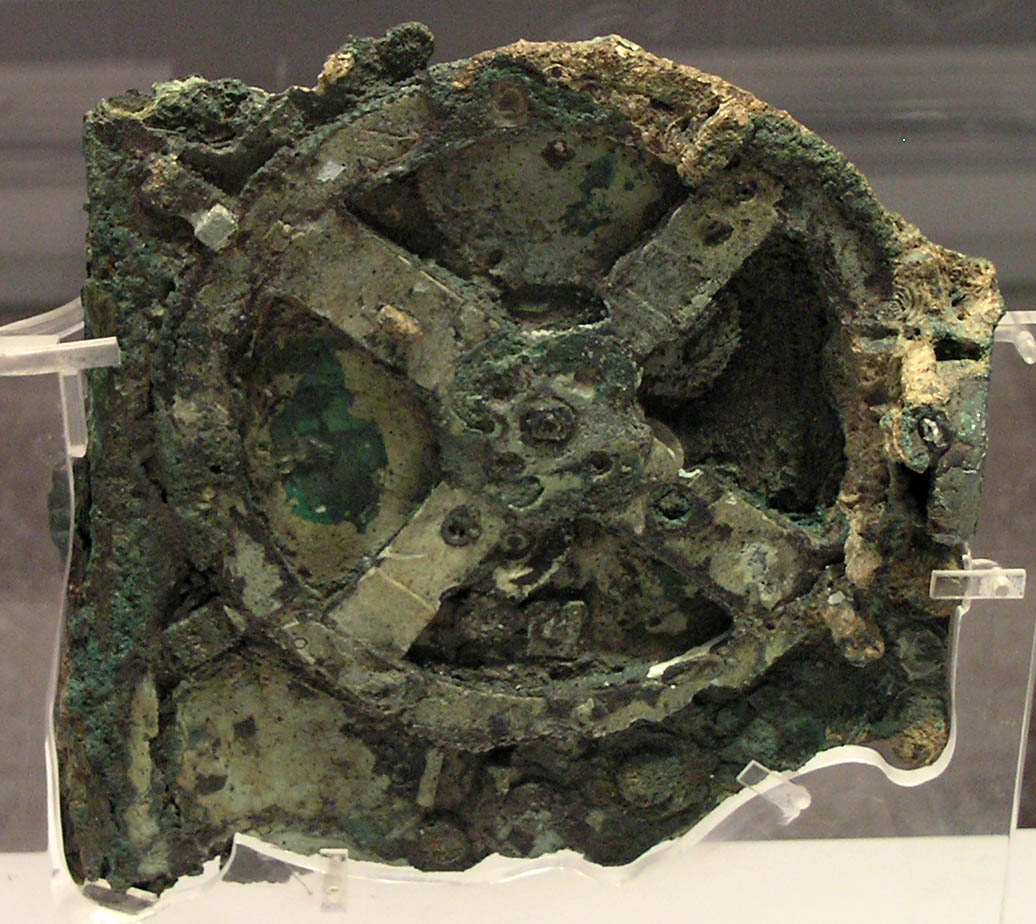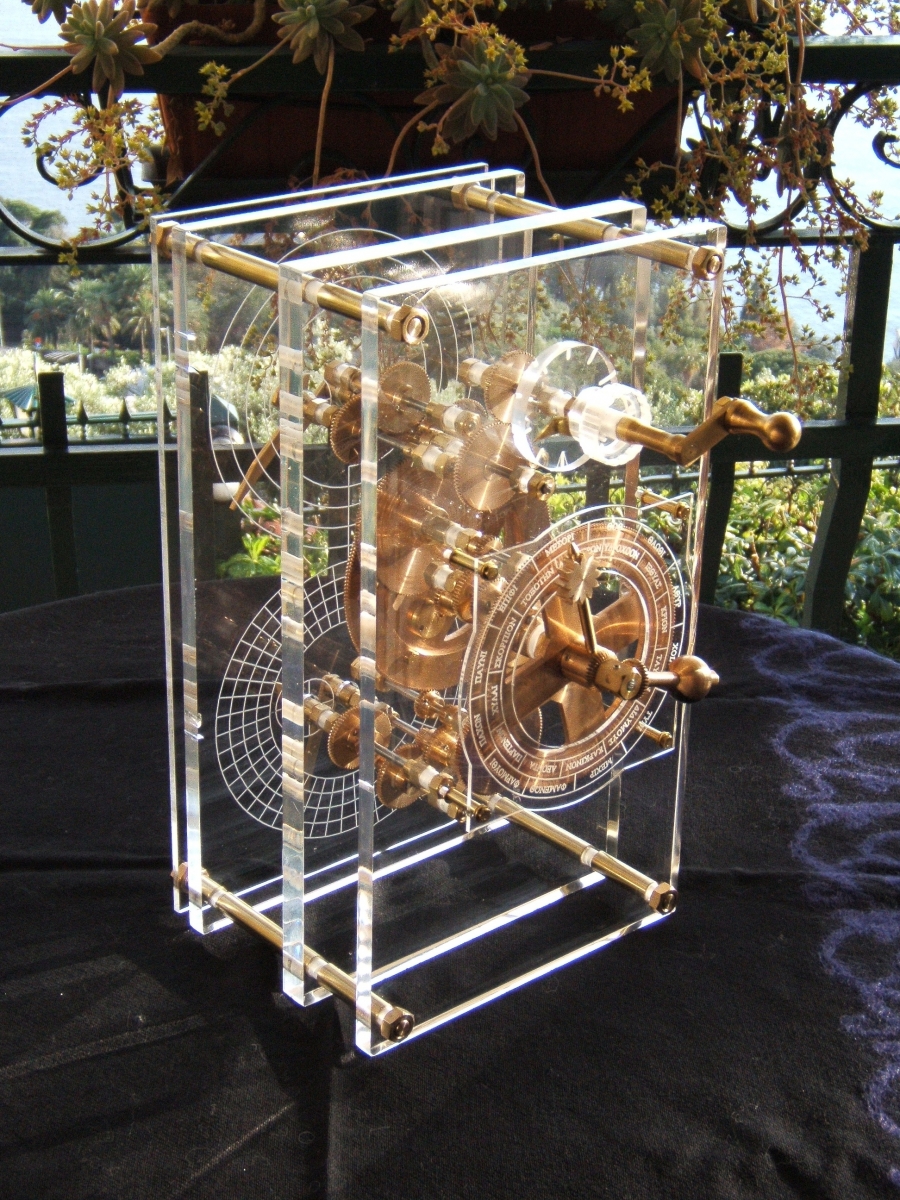The Antikythera Mechanism revealed as a computer
- 17th May 1902 -
 A definition of a computer is often held to be a machine that is capable of performing a set of operations automatically to produce a result in the form of information. Charles Babbage is considered the father of the computer when he invented the first mechanical computer in the early nineteenth century. We also think of Sinclair, Microsoft and Apple. Rarely do we associate computing with the island of Rhodes. The abacus was used by the Romans developed from a device the Babylonians used in around 2400BC. The astrolabe was invented in the 1st or 2nd century BC. However, the Antikythera Mechanism is now thought to be the very first analogue computer.
A definition of a computer is often held to be a machine that is capable of performing a set of operations automatically to produce a result in the form of information. Charles Babbage is considered the father of the computer when he invented the first mechanical computer in the early nineteenth century. We also think of Sinclair, Microsoft and Apple. Rarely do we associate computing with the island of Rhodes. The abacus was used by the Romans developed from a device the Babylonians used in around 2400BC. The astrolabe was invented in the 1st or 2nd century BC. However, the Antikythera Mechanism is now thought to be the very first analogue computer.
It was discovered on a Roman ship that had sunk around the first century BC between mainland Greece and Crete near the Island of Antikythera, so-called because it is directly opposite the larger island of Kythera. On 4th August (Gregorian calendar) 1901 divers using basic apparatus and searching for sponges found the sunken ship 150 feet below the surface of the water. The owner of the boat believed that the diver was mad from decompression sickness when he told him of amazing artefacts.
When the sunken ship was fully explored a few months later coins, pottery and glassware was found and it was assumed that this was a Roman cargo ship manoeuvring around the trade routes. Alongside these finds was a hunk of metal which was put to one side. It wasn’t until a Greek archaeologist, Valerios Stais, looked at the pieces that he saw mechanisms and cogs. He declared, on 17th May 1902, that he had found a Roman device that was most unusual but never followed up his findings.
The mechanism remained unknown until the historian and physicist, Derek de Solla Price started a study in 1951 reporting his findings in 1974. Before he could finish his conclusions and work out how it was used he died in 1983. A few years later Richard Feynman took up the investigations when he visited the National Museum in Athens.
 Many attribute the mechanism to Hipparchus, the ancient astronomer. Born around 190BC in Turkey, he established a school in Rhodes. He was one of the first to put forward the idea that the earth revolved around the sun – but could never prove it. He is also accredited with being the first to produce a trigonometric table, being referred to as the father of trigonometry. In his writings, the Roman Cicero mentions a planetary device built by Posidonius. The latter took over the school run by Hipparchus in Rhodes.
Many attribute the mechanism to Hipparchus, the ancient astronomer. Born around 190BC in Turkey, he established a school in Rhodes. He was one of the first to put forward the idea that the earth revolved around the sun – but could never prove it. He is also accredited with being the first to produce a trigonometric table, being referred to as the father of trigonometry. In his writings, the Roman Cicero mentions a planetary device built by Posidonius. The latter took over the school run by Hipparchus in Rhodes.
The mechanism is about the size of a shoebox and contains 30 gears in a wooden box. There is a hand crank which turned the gears causing the dials and rings to rotate. On these dials are Greek zodiac signs and Egyptian calendar days. On the back was a bronze panel which gave instructions to the user on how to operate the device. This was written in Koine Greek – the common language used in that day. With this you could track the lunar calendar, predict eclipses, chart the path of the moon, track the seasons and give dates for certain festivals. For example, there is an Olympic dial for when to hold the Olympic Games. This was, of course, very helpful for agriculture and religion. The user could figure out the moon’s period at any given time. There were also hands for Mercury, Venus, Mars, Jupiter and Saturn.
The name of Hipparchus is not as well-known as Steve Jobs, Bill Gates or Charles Babbage. We tend to think that we are the most clever generation. A similar device was not produced in Europe again until the fourteenth century. The Antikythera Mechanism is a most remarkable piece of engineering and would stand up against anything invented in the modern era.


